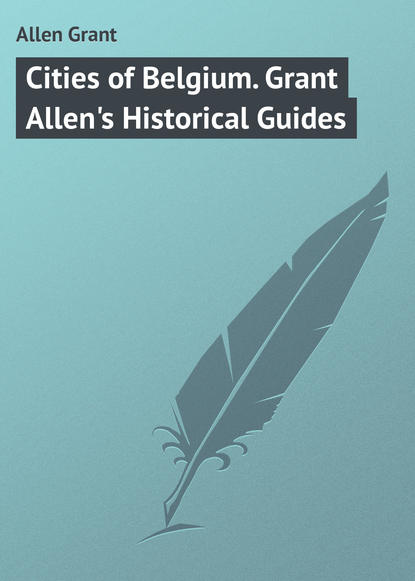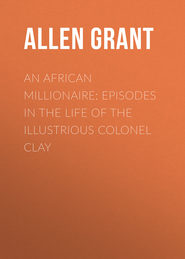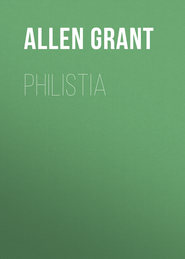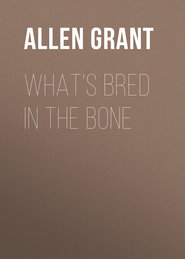По всем вопросам обращайтесь на: info@litportal.ru
(©) 2003-2024.
✖
Cities of Belgium. Grant Allen's Historical Guides
Настройки чтения
Размер шрифта
Высота строк
Поля
Further details of the vicissitudes of Ghent can be found in Van Duyse, Gand, Monumental et Pittoresque.
The chief objects of interest at Ghent are the Cathedral, with its great Van Eyck; and the Town Hall and Belfry. These can be tolerably seen in one day: but a stay of three or four days will not be too much to explore the curious nooks of the early city.
B. THE CORE OF GHENT
[The old town of Ghent lies on the island formed by the junction of the Lys and the Schelde, with their various backwaters (all now largely artificial). Near this point, but beyond the Lys, the Counts of Flanders early erected a strong castle, the Gravensteen or Oudeburg, beneath whose protection, aided by the two navigable rivers, merchants and weavers gradually settled. As at Bruges, the heart of the town, however, is purely municipal and mercantile in its architecture. The Town Hall, which was the meeting-place of the citizens, and the Belfry, which summoned them to arms or council, are the chief points of interest in the city. The Schelde is still tidal to its very centre.
As most visitors will probably stop in one of the hotels on the Place d’Armes, near the S. end of older Ghent, I shall frankly take that square as our starting-point. It may facilitate recognition at first sight to add that the large square tower, visible to the R. from the Place d’Armes, is that of the Cathedral, while the tapering spire, crowned by a gilt dragon, belongs to the Belfry.]
Go first on a tour of orientation through early Ghent. If you follow these directions implicitly, you can see everything important in one short walk. Cross the Place d’Armes diagonally to the N.E. corner, and follow the small and narrow streets which run due N. to the front of the Cathedral. Walk round the S. side of this, to form a first general impression, but do not enter it at present.
Then, from the West Front of the Cathedral, take the Rue St. Jean straight before you. The tower with the gilded dragon which faces you as you walk is that of the Belfry. It was designed in 1183, about a century earlier than that of Bruges, but only erected between 1321 and 1339; it is a fine work in the Early Gothic style. Its windows have been walled up. The tapering turret which crowns the tower is unfortunately modern, and of iron. On the very summit stands a huge gilded dragon, which universal tradition represents as having been brought from St. Sophia at Constantinople to Bruges by the Crusader Baldwin of Flanders, (1204), and removed as a trophy by the people of Ghent (under Philip van Artevelde) in 1382. It certainly appears to be of Oriental origin, but is stated on documentary evidence (discovered by M. Vuylsteke) to have been made in Ghent itself in 1380. If so, it would seem at least to be based on an Oriental model.
The small building at the foot of the Belfry, now in course of (over) restoration, is the Cloth Hall, erected in 1424, a graceful but not very important Gothic edifice (of the Decorated period), with niches vacant of their statues. The concierge of the Belfry now has a room in it. Application must be made here to mount to the summit. (1 franc, or 2 for a party.) Dark and steep.
The view is extensive and beautiful, but not quite so striking as that at Bruges. The principal buildings of the city lie just below you: beyond, all Flanders. The chimes are celebrated. The chief bell is known as Roelandt.
Now turn round into the Botermarkt or Marché au Beurre to the right, and inspect the Belfry again from the little bay in the corner opposite. This is the best near view of the tower. The portal to the R. was formerly the entry to the town prison, beneath the Belfry, now in course of complete restoration. In its gable is a too-famous 18th century relief (the Mammelokker) representing the Roman daughter feeding her father from her breast at the window of a prison, and doubtless intended to excite the charity of passers-by. It certainly serves no other function, for it is neither beautiful nor decorative.
Cross over to the R. side of the Butter-market. The building on the L., in two totally distinct portions, is the Hôtel-de-Ville. The part at which you first arrive, (latest in point of time,) was rebuilt in the early Renaissance style in 1595-1628. It is one of the earliest and in many ways the best example of Renaissance architecture in Belgium, in part because it retains certain good features of local domestic building, such as the pointed gable-ends (round the corner to the L.) and the projecting windows with dormers on the main façade. (Look out for their origin elsewhere.) It has three storeys, with projecting half colonnades, the columns being Doric on the ground floor, Ionic on the first floor, and Corinthian on the second. Recollect the gable-ends and dormers for comparison with others in old houses in Ghent hereafter.
Now, continue on to the corner, where we arrive at the earlier Gothic portion of the Hôtel-de-Ville, erected in 1518-1535 by Dominic de Waghemakere, who also built in part the cathedral at Antwerp. The projecting polygonal corner, with its handsome balcony, is very noticeable. The work is of the latest and most florid Gothic, somewhat lacking in grace and dignity, but ornate in its splendour. Observe the depressed arches, the noble cornice, the rich decoration of garlands. A few of the niches have now been filled with modern statues of saints. From the corner opposite, a good view is obtained of both parts of the Hôtel-de-Ville and also of the Belfry.
Turn to the left into the Rue Haut-Port, to observe the main front of this earlier Gothic building, with its fine projecting windows above, its empty niches, its handsome entrance staircase and main portal, its beautiful little balcony for addressing the people below, and the large projecting window of its ancient chapel near the centre. Note how well the façade is thus broken up and diversified. This is the finest specimen of florid Gothic in Belgium. Beyond it comes another Renaissance portion, and then a handsome Renaissance dwelling-house. The street also contains several fine early houses, the best of which (a Gothic guildhall, known as the Cour St. Georges) stands at the corner to the left, facing the Hôtel-de-Ville.
The interior of the Hôtel-de-Ville need not be visited, though it has a handsome Gothic staircase (demolished, sold, built into a private house, re-erected) and some fine halls and internal courts, interesting to those who have plenty of time at their disposal.
Now, return to the Belfry and continue straight down the left-hand side of the Rue de la Catalogne. The church on the right, round the base of which houses have been allowed to cluster, is St. Nicolas– the oldest in the town. This is one of the most solid pieces of architecture at Ghent. It has a fine decorated tower, which has happily escaped restoration, besides small turrets to the Transepts, and two, rather larger, to the gable of the Nave. Go on into the Koornmarkt or Marché aux Blés, to the R.; stand there for a moment, at the end of the Rue de la Catalogne, to observe the fine coup d’œil, which takes in St. Nicolas, the Belfry, and the tower of the Cathedral. The main façade of St. Nicolas faces the Koornmarkt. Over the door is a modern figure of the Saint himself, raising the three boys who were salted down for meat. Nicolas was the popular saint, the patron of the merchants and burgesses; and the prominent position of his church on the Corn Market is very characteristic of the burgher spirit of Ghent.
A hasty glance will suffice for the interior, which is a characteristic specimen of the unrestored Belgian church, with figures of the Twelve Apostles (as always) against the pillars of the Nave; an ugly carved pulpit; short Transepts; an Apse with bad glass; and the vaulting of Nave, Aisles, and Choir concealed by plaster. The tawdry decorations render what might be a fine interior wholly unimpressive. The High Altar has an altar-piece by Liemakere, representing, in the confused style of the School of Rubens, the election of St. Nicholas as Bishop of Myra. Above is an 18th century figure of the Saint, raising the three boys from the tub. The early pillars of the Choir are really handsome.
On emerging from the front of the church, continue straight on to the bridge which crosses the Lys, affording a good view to the L. of the Apse of St. Michel. Then, go along the side of this handsome church, with late Gothic windows resembling English Perpendicular. It has a solid but unfinished tower, and a good West Portal, robbed of its sculpture and cruelly mutilated. A glimpse at the interior, which has been scraped and renovated, will show at once the fine architecture. The Nave has impressive round pillars, windows in the clerestory, and excellent brick vaulting. The vaulted Aisles are surrounded by chapels. The Choir is very handsome. In the N. Transept is a famous but overrated *Crucifixion by Van Dyck, not without beauty of conception and composition, but spoiled by restorations. Walk round the Transepts and Ambulatory. There are some good works of the School of Rubens.
Now, continue along the quay, on the same side as St. Michel, (observing as you go that the early town extended to both banks of the river), in order to view the façade of the handsome Maison des Bateliers, or Guild House of the Skippers, erected in 1531 for the masters of the shipping of Ghent, in somewhat the same florid late-Gothic style as the Hôtel-de-Ville. This is the finest existing specimen of old Flemish houses. Over the doorway is an appropriate relief of a ship, somewhat antiquated and heraldic in character. By the side of this Guild-house are two others, less interesting: the first, the Guild House of the Grain Measurers; the next, very old and dilapidated, the Staple House of Corn, Romanesque, said to be the earliest civil building in Belgium. Several fine gable-ends are seen to the L., including one with Renaissance architecture, on this side of the Lys. At the moment of writing, the houses next to the Skippers’ Guild are in course of demolition, exposing a bare side of the old Hall most unpicturesquely.
Now, retrace your steps over the Bridge, and through the Corn Market, almost wholly modernized, with the exception of a few gabled houses.
The next little square at which we arrive is the Marché aux Herbes. Its W. side is occupied by the ancient but uninteresting Grande Boucherie. Turn to the L. by the corner of the Boucherie, with Our Lady and Child in a niche, and cross the bridge to the other side of the Lys. On the left are two handsome old houses. In front rise the gateway and bastions of the Oudeburg, or Castle of the Princes. This was the primitive palace of the Counts of Flanders in Ghent. The irregular little square in front of it is known as the Place Ste. Pharailde. The castle has recently been cleared from the numerous modern houses which encumbered and hid it. The first stronghold on this site was erected in 868. The existing ruins of the gateway, with round Romanesque arches, date back to 1180; the square keep behind is of the 10th century. In this palace Jacob van Artevelde entertained Edward III. When Edward returned to England, he left Queen Philippa here, and during his absence she bore (in the Monastery of St. Bavon) her third son, John of Gaunt, who took his well-known surname from the place of his birth. It was on Edward’s return to Flanders, accompanied by the ladies of Philippa’s suite, that he found the French fleet drawn up near Sluys to prevent his entry into the port of Bruges, on which occasion he gained the first great English naval victory. The Castle, which is now in course of partial restoration, is closely bound up with the greatness of Van Artevelde and the heroic period in the history of Ghent.
Walk round it to note its extent and its commanding position at the point where the bridge crosses the Lys to the main part of the town.
The opposite corner of the Place Ste. Pharailde has a Renaissance gateway, re-erected in imitation of the original by Arthus Quellin, and adorned with sculptures of Neptune, the Schelde, and the Lys, the sources of Ghent’s greatness. It leads to the Fish-market. Around are several good old houses.
Continue along the quay on the same side of the river as the Oudeburg, as far as the Pont du Laitage, just before reaching which you pass on your left two 17th century houses with reliefs, (the Works of Charity, a Flying Hart, etc.). Cross the bridge and turn to the R. as far as the big cannon, known as Dulle Griete or Mad Margaret, dating back to the 14th century. By the touch-hole are the Cross of St. Andrew and the Arms of Phillipe le Bon of Burgundy.
Turn into the large square in front of you. The building which faces you at the end of the street as you advance (with a tower at the corner and high gables) is one of the best old mediæval houses in Ghent, the Collacie-Zolder, or Municipal Council-Room, of the 13th or 14th century. It has an interesting little pulpit or balcony at its corner, with a bell, from which addresses could be made to the people. The towers that face you a little to the L. are those of St. Jacques, to be visited presently.
Continue into the square, at the corner of which is the Municipal Council-Room. This is the Vrydagmarkt or Marché du Vendredi, in which a strikingly picturesque market is still held every Friday morning. If possible, visit it. The square was the forum of old Ghent and the meeting-place of the citizens. A few fine old buildings in the native local style still surround it. The centre is appropriately occupied by a modern colossal statue of Jacob van Artevelde, addressing the citizens in his famous speech when he excited them to opposition to the Count of Flanders with his Gallicising policy. At the base are allegorical figures of Flanders, and of the Belgian towns, wearing mural crowns. The reliefs represent Van Artevelde’s three chief diplomatic triumphs, – the League of Ghent with Bruges and Ypres; the League of Flanders and England; the League of Flanders, Brabant, and Hainault. In this square the most important events in the history of early Flanders took place. Here the citizens of Ghent took the oath of allegiance to each new Count on his accession, after they had compelled him to swear in good old Teutonic style “to uphold and see upheld all the standing wits (laws), fore-rights (regulations), freehoods, and wonts of the Countship and town of Ghent.” The guilds which had their halls around met here to oppose arbitrary action on the part of their sovereign. Here, too, the parties within the town itself frequently joined issue in civil contest. In later times, the Duke of Alva perpetrated most of his shameful executions on this spot. The site of the statue of Van Artevelde was originally occupied by one of Charles V., who was born in Ghent, in a palace now destroyed, and whose history (see later) is intimately connected with this town, always one of his principal residences. The statue was destroyed in 1794 by the French invaders: (picture in the Museum).
Turn up at the corner by the Municipal Council-Room and take the first street to the L., which leads you into the Place St. Jacques, occupied by the Church of St. Jacques. The façade, with the two towers, was Romanesque, but has been restored in such a wholesale way as to destroy its interest. The remainder of the church is Gothic. Walk round it so as to observe its features, noticing in particular the quaint stone spire of the right-hand tower. The interior might be good, were it not spoiled by tawdry decorations. The pulpit has a marble figure of the patron, St. James, with the pilgrim’s staff and gourd, emblematic of his connection with the great place of pilgrimage of Santiago de Compostella. The vaulting has been freed from excrescences, and is excellent of its kind. The High Altar has a figure of St. James above, and a painting of his martyrdom beneath.
This walk will have led you through the principal part of early Ghent. Hence you may return either by the Cathedral, or by the chief line of business streets which runs direct from the Pont du Laitage to the modern Palais de Justice and the Place d’Armes.
C. THE CATHEDRAL
[The local patron saint of Ghent is St. Bavon, a somewhat dubious personage, belonging to the first age of Christianity in Flanders, of whom little is known. Legend describes him as a “Duke of Brabant” in the 7th century (of course an anachronism). He seems to have been a nobleman of Hesbaie who spent his life as a soldier “and in worldly pleasures”; but when he was 50, his wife died, and, overwhelmed with grief, he gave up all his possessions to be distributed among the poor, and entered a cell or monastery in Ghent, of which St. Amand (see later) was the founder. Of this he became abbot. At last, finding the monastic life not sufficiently austere, the new saint took refuge in a hollow tree in a forest, and there spent the remainder of his days. His emblem is a falcon. The monastery of St. Bavon long existed at Ghent; some of its ruins still remain, and will be described hereafter. To this local saint, accordingly, it might seem fitting that the Cathedral of Ghent should be dedicated. But in reality the building was at first a parish church under the invocation of St. John the Baptist, and only received the relics and name of St. Bavon after 1540, when Charles V. destroyed the monastery, as will be described hereafter.
The real interest of the Cathedral centres, however, not in St. Bavon, nor in his picture by Rubens, but in the great polyptych of the Adoration of the Lamb, the masterpiece of Jan van Eyck and his brother Hubert, which forms in a certain sense the point of departure for the native art of the Netherlands. This is therefore a convenient place in which to consider the position of these two great painters. They were born at Maaseyck or Eyck-sur-Meuse near Maastricht; Hubert, the elder, about 1360 or 1370; Jan, the younger, about 1390. The only undoubted work of Hubert is the altar-piece in St. Bavon, and even this is only his in part, having been completed after his death by his brother Jan. Hubert probably derived his teaching from the School of the Lower Rhine, which first in the North attained any importance, and which had its chief exponents at Maastricht and Cologne. Of this School, he was the final flower. Though not, as commonly said, the inventor of oil-painting, he was the first artist who employed the process in its developed form, and he also made immense advances in naturalness of drawing and truth of spirit. Jan was probably a pupil of Hubert; he lived at Ghent while the great picture of the Adoration of the Lamb was still being completed; later, he was painter by appointment to the court of the Dukes of Burgundy, and had a house at Bruges, where he died in 1440. He was also employed on various missions abroad, accompanying embassies as far as to Portugal. His painting, though less ideal and beautiful than that of his great successor Memling, is marvellous in its truth: it has an extraordinary charm of purity of colour, vividness of delineation, and fine portrayal of character. Indeed, all the early Flemish artists were essentially portrait painters; they copied with fidelity whatever was set before them, whether it were fabrics, furniture, jewellery, flowers, or the literal faces and figures of men and women.
Hubert and Jan van Eyck, however, were not so much in strictness the founders of a school as the culminating point of early German art, to which they gave a new Flemish direction. Their work was almost perfect in its own kind. Their successors did not surpass them: in some respects they even fell short of them.
The Adoration of the Lamb is by far the most important thing to be seen at Ghent. But it is viewed at some disadvantage in the church, and is so full of figures and meaning that it cannot be taken in without long study. I strongly advise you, therefore, to buy a photograph of the entire compositionbeforehand, and try to understand as much as possible of the picture by comparing it with the account here given, the evening before you visit the picture. You will then be able more readily to grasp the actual work, in form and colour, when you see it.
The Cathedral is open daily (for viewing the pictures, etc.) from 5 to 12, and from 3.30 to 6. Between 12 and 3.30 you can also get in by knocking loudly on the door in the West Front.]
Go straight from your hotel to the Cathedral, – built as the parish church of St. John about 1250-1300; re-dedicated to St. Bavon, 1540; erected into a Bishop’s see, 1599. Stand before the West Front at a little distance, to examine the simple but massive architecture of the tower and façade.
The great portal has been robbed of the statues which once adorned its niches. Three have been “restored”: they represent, centre, the Saviour; L., the patron, St. Bavon, recognisable by his falcon, his sword as duke, and his book as monk; he wears armour, with a ducal robe and cap above it; R., St. John the Baptist, the earlier patron.
Then, walk, to the right, round the south side, to observe the external architecture of the Nave, Aisles, and Choir. The latter has the characteristic rounded or apsidal termination of Continental Gothic, whereas English Gothic has usually a square end. Enter by the S. portal.
The interior, with single Aisles and short Transepts, (Early Gothic) is striking for its simple dignity, its massive pillars, and its high arches, though the undeniably noble effect of the whole is somewhat marred to English eyes by the unusual appearance of the unadorned brick walls and vaulting. The pulpit, by Delvaux (1745), partly in oak, partly in marble, represents Truth revealing the Christian Faith to astonished Paganism (figured as an old and outworn man:) it is a model of all that should be avoided in plastic or religious art. The screen which separates the Choir from the Transepts is equally unfortunate. The apsidal end of the Choir, however, with its fine modern stained glass, forms a very pleasing feature in the general coup d’œil.
Begin the examination in detail with the left or N. Aisle. The 1st chapel, that of the Holy Cross, contains a Pietà by Janssens and a Descent from the Cross by Rombouts, good works of the school of Rubens. The 3rd chapel, that of St. Macarius or St. Macaire (an object of local worship whom we shall meet again elsewhere at Ghent), has a modern statue of the saint, and a pleasing decoration in polychrome. The right or S. Aisle has nothing of importance.
A short flight of steps leads to the Ambulatory, whose black-and-white marble screen, on the side toward the Choir, is not without dignity.
The sacristan opens the locked Chapels in the Ambulatory (flamboyant), beginning at the steps on the R. or S. side of the Choir. You will find him in the Sacristy, in the N. Transept. Do not let him hurry you.
The 1st chapel contains a tolerable triptych by F. Pourbus (son of Peter), with the Finding of Christ in the Temple for its central subject, and the Circumcision and Baptism on the inner wings. Notice in the last the conventional attitudes of the Baptist, the Saviour, and the angel with the towel, as in the Gerard David and all old examples of this subject: but the semi-nude figure undressing in the foreground is an unhappy innovation of the Renaissance. Many of the heads in the central picture are portraits: Alva, Charles V., Philip II., and Pourbus himself. On the outer wings is a good *portrait of the donor (Viglius) adoring the Saviour (1571).
3rd chapel. Crucifixion, by Gerard van der Meire, of Ghent. On the left wing, Moses striking the Rock, symbolical of the fountain of living water, Christ. On the right wing, the Elevation of the Brazen Serpent, symbolical of the Crucifixion. This is a mystic “typical” picture, interesting only for its symbolism. Note the Flemish love of such subjects.
The 4th chapel contains a good tomb of Cornelius Jansen and Willem Lindau, the two first bishops of Ghent (bishopric founded only in 1599) with fair recumbent figures of the early 17th century.
5th chapel. Coxcie. Lazarus and Dives: a mediocre picture.
Mount the steps to the Upper Ambulatory.
The 6th chapel (of the Vydts family) contains the famous altar-piece of the **Adoration of the Lamb, by Hubert and Jan van Eyck, to study which is the chief object of a visit to Ghent. See it more than once, and examine it carefully. Ask the Sacristan to let you sit before it for some time in quiet, or he will hurry you on. You must observe it in close detail.
As a whole, the work before you is not entirely by the two Van Eycks. The Adam and Eve on the outer upper shutters of the interior (originally by Hubert) have been altogether removed, and are now in the Museum at Brussels, where we shall see them in due course. Their place has been filled, not by copies (for the originals were nude), but by skin-clad representations of the same figures, whose nudity seemed to the Emperor Joseph II. unsuitable for a church. The lower wings, which were principally (it is believed) by Jan van Eyck, have also been removed, and sold to Berlin. They are replaced by very tolerable copies, made in the early 16th century by Michael Coxcie. Thus, to form an idea of the detail of the original in its full totality it is necessary to visit, not only Ghent, but also Brussels and Berlin. Nevertheless, I describe the whole picture here as it stands, as this is the best place to observe its general composition. I shall say a few words later as to variations of this work from the original. There is a good copy of the whole picture in the Museum at Antwerp, where you will be able to inspect it at greater length and under easier conditions. The remaining portions of the original still left here are believed to be for the most part the work of Hubert van Eyck. Jan must rather be studied in many scattered places, – Bruges, Brussels, Berlin, Paris, Madrid, and London.
The altar-piece was commissioned from Hubert van Eyck by Josse Vydts (Latinised as Jodocus), a gentleman of Ghent, and his wife, Isabella, about the year 1420. Hubert died while the polyptych was still unfinished, and Jan completed it in 1432. Too much importance has been attached by critics, I fancy, to the rhyming hexameter inscribed upon it, (with the words “De Eyck” unmetrically introduced:) “Pictor Hubertus major quo nemo repertus,” etc. They have been twisted into a deliberate expression of belief on the part of Jan that Hubert was a greater painter than himself. If so, it seems to me, Jan was a worse critic than painter. They are probably due, however, to a somewhat affected modesty, or more probably still, to a priestly poet who was in straits to find a rhyme for Hubertus.
I proceed to a detailed explanation of the picture.
The subject, in its entirety, is the Adoration of the Lamb that was Slain, and it is mainly based on the passage in the Apocalypse: “I looked, and lo, a Lamb stood on the Mount Zion, and with Him an hundred and forty and four thousand, having His Father’s name written in their foreheads… And I heard the voice of harpers harping with their harps.” Elsewhere we read: “I beheld, and, lo, a great multitude, which no man could number, clothed with white robes, and palms in their hands… These are they which came out of great tribulation, and have washed their robes, and made them white in the blood of the Lamb. Therefore are they before the throne of God; and He shall feed them, and shall lead them to living fountains of waters, and shall wipe away all tears from their eyes.” Much of the imagery, however, I believe, is also taken from the Te Deum.











